You can download and install additional languages for Windows 11/10 to view menus, dialog boxes, and other user-interface items in your preferred language using the Language Control Panel if Language Packs won’t install, then this post will show you how to install and uninstall languages in Windows 11/10 correctly.
Add or Install Language on Windows 11/10
Windows 11
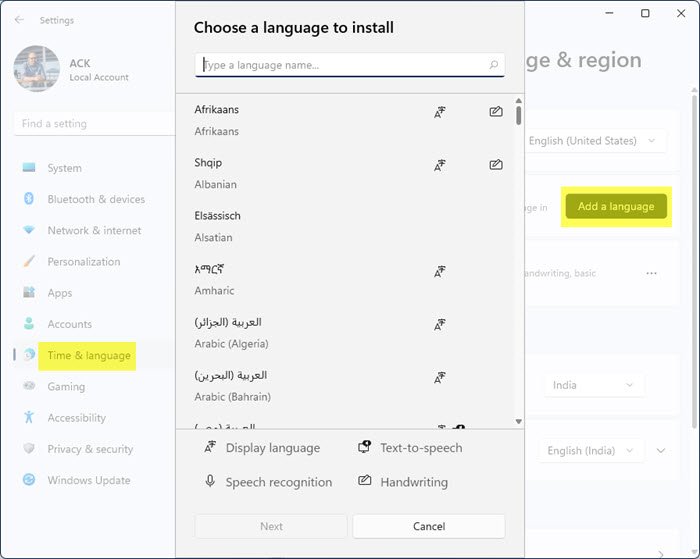
In Windows 11, to Add or Install Languages, do the following:
- Open Windows 11 Settings
- Select Time & language
- On the right side, click on Language & region
- You will see a Add a language button
- Click on it and select a language to add from the fly-out menu.
Windows 10
Open the Settings app > Time & Language. Here click on Language to open the next panel.
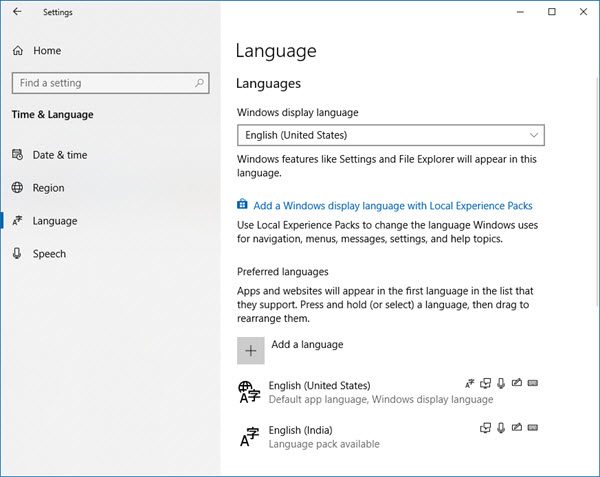
Once here, from the Windows display language drop-down menu, select the language of your choice. If you do not see the one you want, you can Add a language by pressing the ‘+’ sign or Add a language button.
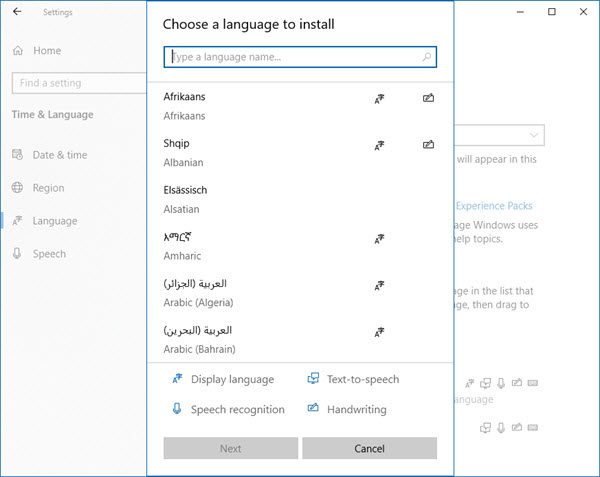
Choose the language to install and select Next to complete the process. It will start downloading, and you will see the following notification appear.
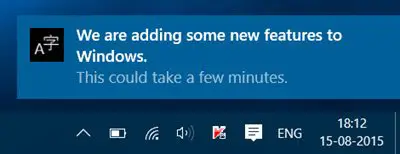
Here you can click on a Language and set a language as the default language for your system or Remove a language. You will also see an Options button and a Remove button.
Change Windows Display Language
In Windows 11
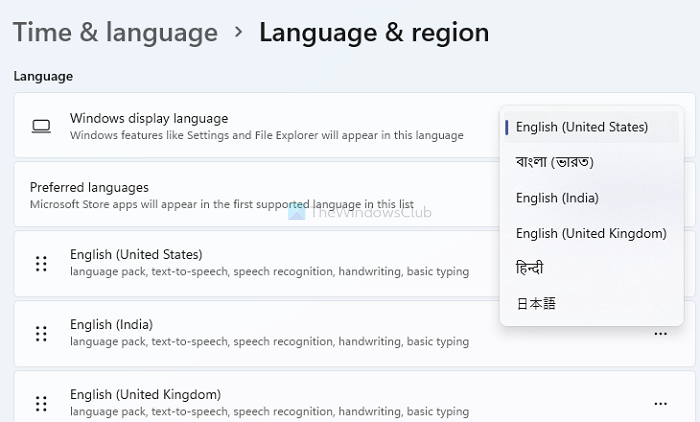
Under Time & Language > Language and region, the first option that shows up is the Windows display language. You can change it by clicking on the dropdown and then select one of the installed languages.
In Windows 10
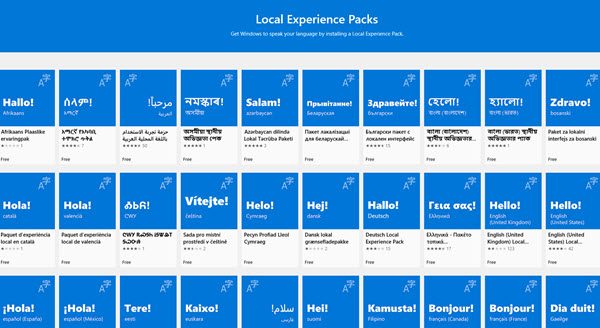
You can also click on the blue Add a Windows display language with Local Experiences Pack to use local experience packs to change the language for navigation, menus, messages, settings, and help topics.
The link will take you to Microsoft Store, where you can download and install the pack.
Change Language Options
In Windows 11
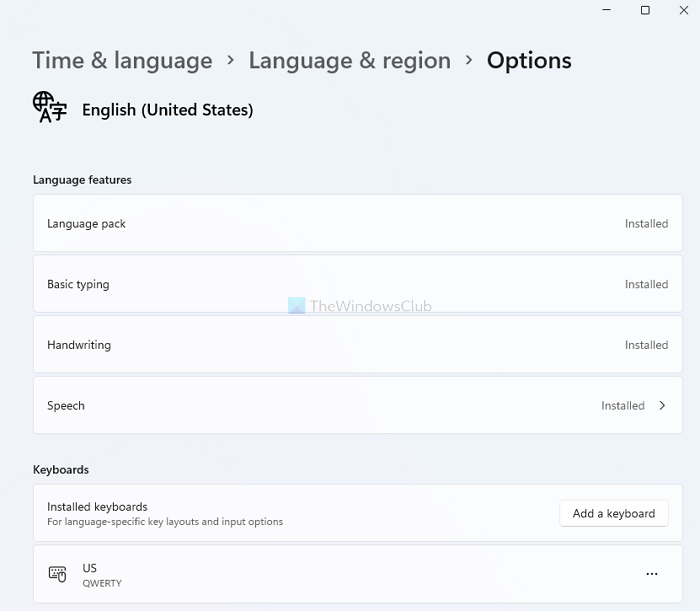
Click on the three-dotted menu option on any of the available languages, and select Language Options. You can then notice where the language can be used, i.e., language pack, typing, handwriting, and speech. You can also add a language-specific keyboard.
In Windows 10
If you select a Language, then you will see the Options and Remove buttons become visible. You will see the following panel open up.
Clicking on Options offers you additional options. You can add other features like Keyboards, Fonts, Handwriting & Pen, OCR, Typing, Typing Pen, and so on. Clicking on Remove will remove that language.
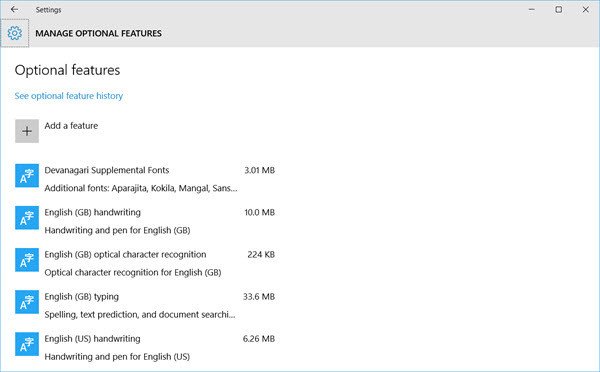
You will also be able to see the History of the last seven days of the Language features added.
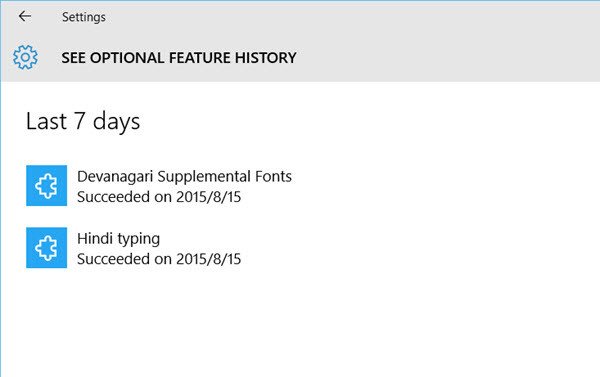
Thus you can see that it is pretty easy to install and remove languages in Windows 11 and Windows 10 via the Settings app. If you open the Control Panel, you will, of course, also see the traditional settings with which you are familiar.
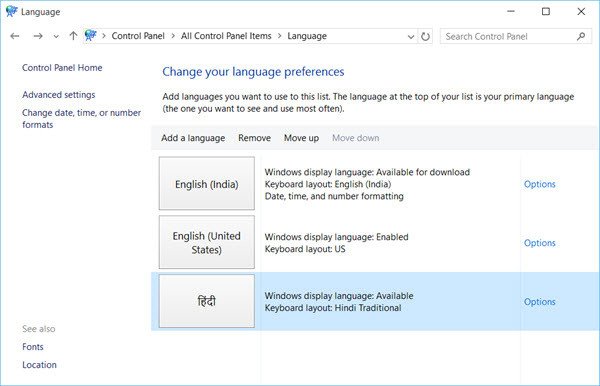
Once installed, you can change the language in Windows to one of your choices.
Read: How to use Google Input Tools on PC.
Remove or uninstall Language Packs in Windows 11/10
If you wish to uninstall Language Packs, you may open an elevated command prompt window, type the following, and hit Enter.
Lpksetup /u
The Install or Uninstall display languages panel will open.
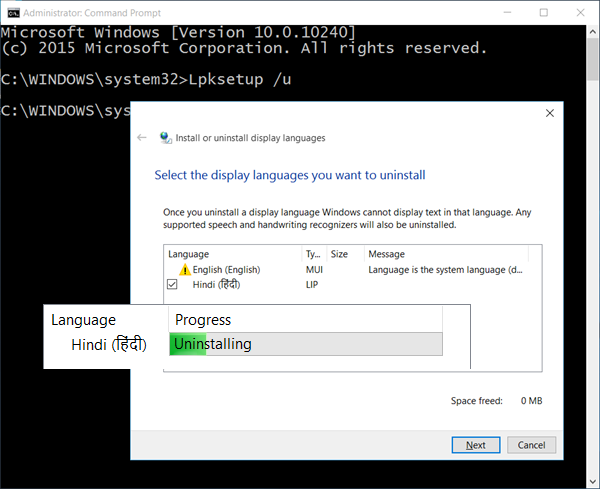
Select the language, click on Next, and the Language Interface Pack will start uninstalling. You will then be asked to restart your computer.
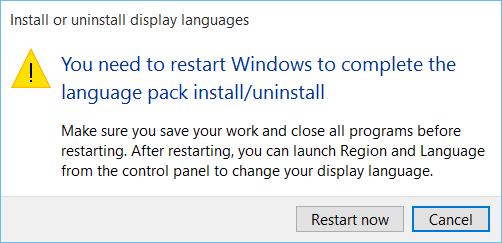
Restart your Windows 11/10 PC to complete the process.
These posts will help you if you:
Why can’t I change the Language on Windows?
If you have bought a Single Language license for your copy of Windows, then you cannot add another language. It applies to only the display language. So you can always add more language, but you cannot change the language you see on the screen.
How do you type in a different language?
Once you have installed more languages to change, you can press the WIN key + spacebar to bring up the language selector, and select it. Your keyboard must support the language or know how to type in the language using the available keyboard.
How to type special characters on a Windows PC?
The fastest way to write a special character is to use the ALT key with the four-digit number. So if you want to type the left arrow, you can use ALT + 1051. Check out our Unicode guide.
This didn’t work for me on Windows 10 on a Surface Pro. Trying to install English as the display langauge and when I follow these steps I get an error saying “Cannot install language on this computer” (message is not in English). :/
The same problem, on a Lenovo, and with italian
it works
can you cmd away the one that is the system language? I bought my PC in Spain and it keeps reverting every now and then, Spanish is the system language and I would like to remove it permanently.
No, you would just have to use your pre-existing Windows 10 to create a Windows 10 copy onto a USB stick (after writing down or otherwise saving your activation code…or you can always just buy a “new” one on Amazon), and then re-install Windows 10 after rebooting the PC from the USB.
Thanks
Language uninstalled.. THEN on restart it came back! :/
This is a scam by Microsoft because it only works if you have a Windows 10 Pro. If you have Windows 10 Home edition, which you probably do because almost all new notebooks have that, then you are stuck with one language only and all other languages are not available for you.
Microsoft did this to make you pay an extra $100 or more to upgrade to Windows 10 Pro.. otherwise you are stuck, just like myself, with a language and notebook you can’t use because you live in a country where they speak a different language than yours.
So your options are:
1. either you pay more to Microsoft
2. You can uninstall windows all together and install Linux
3. Or you can invest a lot of time and money and learn a new language
Sincerely
A very unhappy windows user
I have Windows 10 Pro and I have 4 languanges US English Arabic Kuwait English UK English Australia , I want to remove UK and AU keyboards so how to do it? when I go to region and language I don’t have “remove” option enabled for that 2 keyboards , the “Remov”button is disabled so how to remove them?
I have same problem
Me too !
Or you can do “upgrade” to activate Pro Version with appropriate system tool and then change language !!!
You can allso format Windows partition and then instal Windows Home version in your language legaly due OEM certificate stored in Bios and Windows activate its self to this certificate ! But only OEM versions due license is paid !